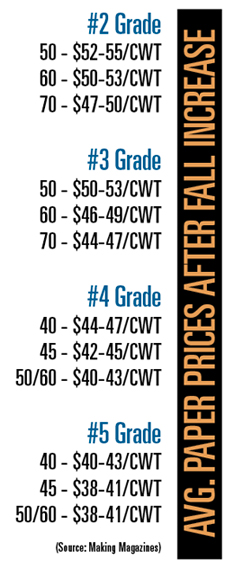 |
| Pulp Mill Paper Production |
What would we do without paper? Think of all the things we use paper for --- from writing to making money of, all the way to ass-wipe and thousands of things in-between --- not to mention the millions of things that paper is an integral part of.
Well, the publishing industry uses its fair share of paper and with the big move to digital has caused wild swings in paper prices the last few years.
But, according to inside analysts, good news may be breaking for the paper people.
Michael Rondon gives this insight in FOLIO magazine:
Paper Industry Begins to Stabilize
Things are beginning to stabilize after years of wild swings
It’s no secret that the paper industry has suffered through volatility as digital mediums wrest readers from print. The aggregate effects of publishers slashing pages and mills shutting down swung prices wildly over the past several years on yet another front of the battle between digital and print.
The market may be stabilizing though as paper mills adjust and page counts slow their decline.
For Terry Choate, president of Making Magazines, static pricing has been a function of the paper mill industry’s ability to manage their own supply.
“The paper mills have done a better job downsizing recently,” he says. “[They’re at] the point where their capacity is pretty much in line with demand.”

(John's Note: CWT = 100 lb. weight; the 50,60,70 numbers in the first column above is weight (lbs) of a certain grade of paper in a standard configuration. Example from above table: #3 grade 50# paper costs $50 to $53 per 100 lb. weight)
The other side of the pricing equation—demand for paper—has stayed relatively flat or declined slightly as of late, Choate says.
Ad pages, a generally reliable indicator of overall page counts, declined 8.3 percent for the industry as a whole in 2012, according to PIB. The numbers stabilized through the fourth quarter however, ending with a 7.3-percent reduction year-over-year.
The gradual stabilization of the paper mill industry, page counts, and therefore pricing, played out in last year’s fall increases. The 2012 catalog season saw a roughly $3/CWT bump across the board—a standard hike Choate says—but those prices have yet to come back down.
“It stuck,” he says. “Prices haven’t decreased since that [fall] increase. And that has to do with that consolidation of paper mills and bringing capacity in line with demand.”
Marie Myers, senior vice president of manufacturing at UBM, agrees. She’s seen the same prices holding in the market, as well.
“They haven’t really shifted one way or the other,” she says. “They’re holding.” The future is a little less certain though.
Read and learn more
A great related link: Printing is More than Reproducing Words and Images on Paper.
The Writers Welcome Blog is available on Kindle :)))

.gif)